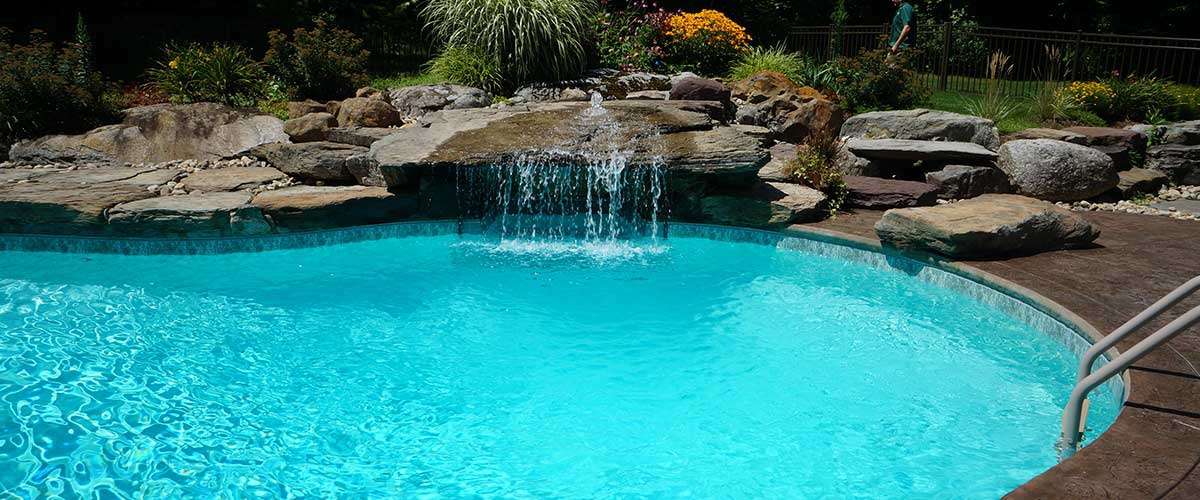How Do You Chlorinate a Pool
Chlorinating a pool is essential for maintaining a clean and safe swimming environment. Proper chlorination helps to eliminate bacteria, algae, and other harmful contaminants, ensuring that your pool is enjoyable and safe for swimming. Here’s a comprehensive guide to understanding and implementing effective chlorination for your pool.
Must Read: How Long Should You Wait Before Swimming After Adding Acid to Your Pool?
Understanding Chlorination
Chlorination refers to the process of adding chlorine to pool water to kill harmful microorganisms. Chlorine is a powerful disinfectant that can effectively destroy bacteria, viruses, and algae, preventing the spread of waterborne illnesses. There are various forms of chlorine used for pool treatment, including:
Liquid Chlorine (Sodium Hypochlorite): This is a concentrated form of chlorine that is easy to use and dissolves quickly in water.
Chlorine Tablets: These are slow-dissolving tablets typically made from trichloroisocyanuric acid (TCCA). They are often placed in a floating dispenser or skimmer basket.
Granular Chlorine: This form can be either fast-dissolving or slow-dissolving. It’s versatile and can be used to shock the pool or for routine maintenance.
Why is Chlorination Important?
Regular chlorination is vital for several reasons:
Health and Safety: Chlorine kills harmful microorganisms that can cause skin irritations, respiratory issues, and gastrointestinal illnesses.
Water Clarity: Chlorination helps to keep pool water clear by preventing algae growth, which can turn water cloudy and green.
Odor Control: Chlorinated water has a fresh scent, while untreated water can develop unpleasant odors due to the growth of bacteria and algae.
Oxidation: Chlorine also helps to oxidize organic matter such as sweat, oils, and leaves, keeping the water clean.
 When to Chlorinate Your Pool
When to Chlorinate Your Pool
The frequency of chlorination depends on various factors, including the size of the pool, usage, and weather conditions. Here are some guidelines:
Daily Use: For pools used daily, chlorination should occur daily or every other day.
Heavy Use: If your pool hosts a lot of swimmers (such as during parties or events), consider increasing the chlorination frequency.
After Rain or Wind: Rain can dilute chlorine levels, and debris from wind can introduce contaminants, so it’s essential to check and adjust chlorine levels afterward.
Steps for Chlorinating a Pool
Test the Water:
Use a pool water test kit or test strips to measure the current chlorine levels. The ideal free chlorine level for pools is between 1-3 parts per million (ppm).
Also, check the pH level, which should be between 7.2 and 7.8. If the pH is too high or too low, adjust it using pH increasers or decreasers.
Choose Your Chlorine Type:
Depending on your pool size, budget, and convenience, choose between liquid, tablet, or granular chlorine.
Tablets are ideal for regular maintenance, while liquid chlorine is effective for quick adjustments.
Calculate the Chlorine Dose:
Determine how much chlorine you need based on your pool size. The dosage can vary, but a general rule of thumb is to use 1 pound of granular chlorine for every 10,000 gallons of water to raise the chlorine level by 10 ppm.
If using liquid chlorine, 1 gallon typically raises the chlorine level by about 5-6 ppm for 10,000 gallons.
Distribute the Chlorine:
For Liquid Chlorine: Dilute the liquid in a bucket of pool water and slowly pour it around the perimeter of the pool while the pump is running. This ensures even distribution.
For Chlorine Tablets: Place them in a floating dispenser or skimmer basket. Avoid placing them directly on the pool floor, as this can damage the surface.
For Granular Chlorine: Dissolve the granular chlorine in a bucket of water and distribute it evenly around the pool, similar to liquid chlorine.
Run the Pool Pump:
After adding chlorine, run the pool pump for at least 8-12 hours. This helps to circulate the chlorine throughout the pool and ensures it reaches all areas, including the deep end.
Retest the Water:
After a few hours or the next day, retest the water to ensure the chlorine levels are within the recommended range. Adjust as necessary.
Shock Chlorination
Occasionally, your pool may require shock chlorination, which involves adding a large dose of chlorine to eliminate chloramines and other contaminants. This process is particularly important during pool renovations to ensure clean and clear water after any significant changes.
When to Shock Your Pool:
After heavy rainfall
After a pool party or increased swimmer load
When the water appears cloudy or smells strongly of chlorine
If you haven't chlorinated the pool in a while
How to Shock the Pool:
Choose the Right Shock Product: Use a calcium hypochlorite or a non-chlorine shock, depending on your preference and needs.
Follow Dosage Instructions: Generally, use 1 pound of shock for every 10,000 gallons of water, but always refer to the product instructions for specifics.
Distribute as Directed: Dissolve the shock in water and pour it around the pool, ensuring even distribution.
Allow Time for Circulation: Run the pump for 8-12 hours, and then retest the water before swimming.
Maintenance and Monitoring
Regularly check and maintain chlorine levels and adjust as needed to ensure your pool remains safe and clean.
Check Levels: Test chlorine levels at least twice a week.
Keep a Record: Keep a log of your chlorine levels and maintenance activities for easy reference.
Conclusion
Chlorinating a pool is a vital aspect of pool maintenance that ensures the safety and enjoyment of swimmers. By adhering to the proper procedures for regular and shock chlorination, you can keep your pool water clean, clear, and free from harmful contaminants. Consistent monitoring and maintenance will allow you to enjoy a beautiful swimming environment throughout the season. Whether you're a new pool owner or have years of experience, working with pool contractors can enhance your understanding of chlorination principles, helping you maintain a safe and pleasant swimming experience.
Post Your Ad Here

Comments